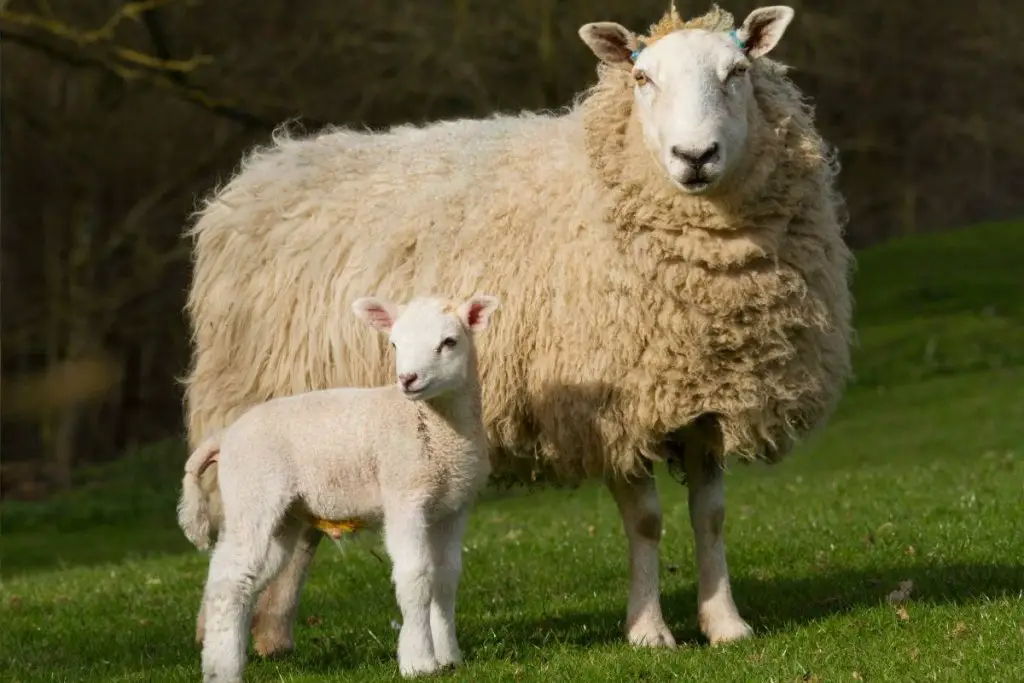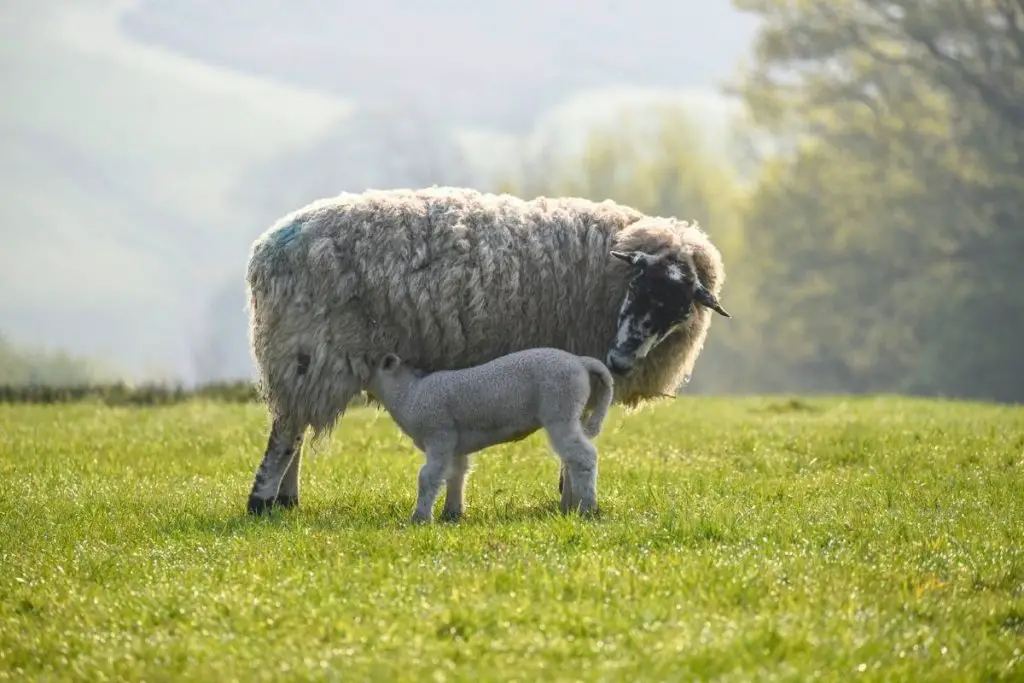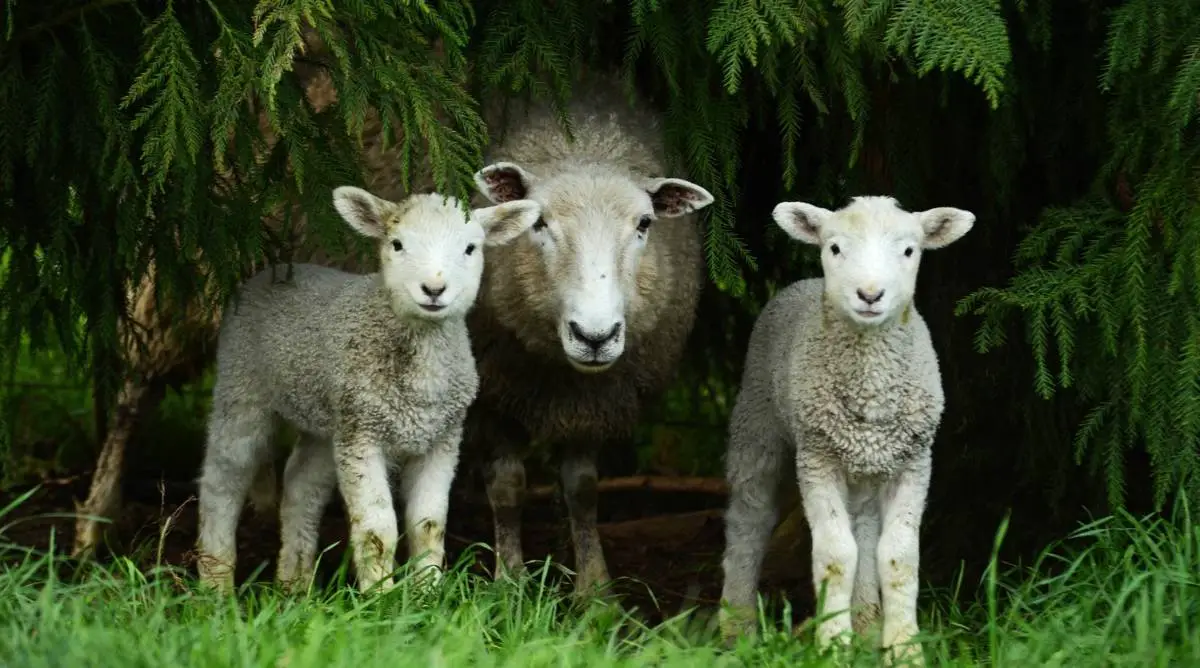A lamb is a young sheep up to one year of age. At one year, lambs are called sheep, ewes, or rams. The term "lamb" also refers to the meat from young sheep. Meat from adult sheep is called mutton.
Table of Contents
When does a lamb become a sheep?
A sheep is considered a lamb until it reaches 12 months of age.
Here’s a breakdown of a lamb’s growth phases from birth to adulthood:
- Lambing (0 to 90 days) – Baby sheep feed on their mother’s milk only from day one up to about 80 days.
- Weaning (from 80 to 90 days) – Weaning refers to the stage where lambs stop feeding exclusively on their mother’s milk. Weaning can occur as early as 14 days after birth. The optimum weaning time is 90 days, and most farmers wean their lambs starting at 80 days.
- Fattening (3 to 12 months): After weaning, lambs are fed on grains and supplementary feeds to help increase their weight.
- Adulthood (12 months and on): If a lamb is kept for its wool or milk instead of being slaughtered, it becomes a sheep at the 12 month mark.
What’s the difference between sheep and lambs?

Personality Differences
Lambs are more gentle and friendly than adult sheep.
Baby sheep can form tight bonds with humans, especially when bottle-fed. Adult sheep can be friendly, but some (especially rams) can be aggressive and defensive.
Behavioral Differences
Lambs are more playful than sheep and quickly bond with other animals.
They’ll run up and down or nibble on things when they’re not feeding. Adult sheep are more composed. They prefer feeding and sticking together with their herds for security.
Sexual Maturity
A lamb becomes a mature and sexually active sheep between 5-12 months old.
At this point, they can be used for breeding.
How do lambs and sheep look different?
Lambs and sheep have several notable (physical) differences.
These include:
- Visual differences: Lambs appear younger and smaller than sheep.
- Horns: Lambs are polled (hornless), while adult sheep often have horns. Rams have more prominent horns than ewes.
- Coloring: The color of a lamb’s coat frequently changes from youth to adulthood. For example, in the California Red breed, it’s common for lambs to have red wool, which shifts to a more brown or rust color as they age.
- Size and weight differences: Lambs are smaller in size than sheep. They weigh 5-10 pounds at birth. Adult sheep weigh anywhere from 100-350 pounds or more, depending on the breed and gender.
Feeding Lambs vs Sheep

Newborn lambs feed entirely on milk until weaning.
Most lambs are weaned at three months, at which point they start feeding on grass. Some farmers offer grains and other supplements to fatten their lambs as they approach adulthood.
Adult sheep mainly require grass, other plant materials, water, and sometimes supplements.
Bottle Feeding Lambs
Lambs need to feed on colostrum (the first milk) as it is nutritious and builds their immune system.
However, it’s not always practical for lambs to suckle due to situations like
- Mother’s death
- Abandonment
- Rejection
In these situations, bottle feeding is handy to meet lambs’ dietary and nutritional needs. You can get commercial colostrum to bottle feed your lamb to boost its survival chances.
A newborn lamb’s colostrum requirement is 10% of its body weight. You should bottle feed the lamb every two hours during the first 24 hours. After two weeks, feed the lamb every four hours.
Lamb vs sheep wool
Lamb wool is considered superior to sheep wool.
Here are the key differences between the two:
| Lamb Wool | Sheep Wool |
| Softer | Harder |
| Less coarse | More coarse |
| More costly | Less costly |
| Doesn’t require regular shearing | Requires regular shearing |
Lamb vs sheep meat
Lamb is the meat obtained when a lamb is slaughtered before attaining one year of age. Mutton is the meat from a sheep aged one year and above.
There are specific names for sheep meat at each age:
- Baby lamb: meat from lamb at 6 – 10 weeks
- Spring lamb: meat from lamb at 5 – 6 months
- Yearling: meat from sheep aged 12 – 20 months
- Mutton: meat from sheep above 12 months
Here are more differences between lamb and mutton:
| Characteristic | Lamb | Mutton |
| Fat content | Minimal fat content (lean) | Moderate to high-fat content |
| Texture | Very tender | Tougher |
| Flavor | Mild flavor | Strong flavor |
| Color | Pink to pale red | Deep red |
| Demand | More desirable | Moderately desirable |
| Cost | More costly | Cheaper |

